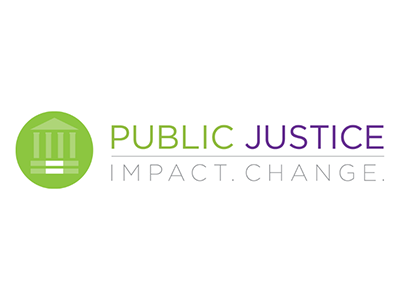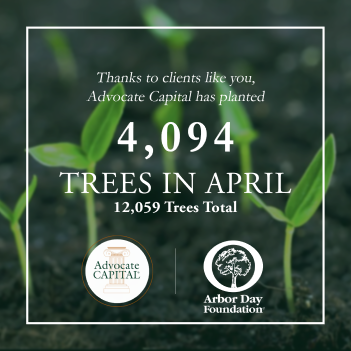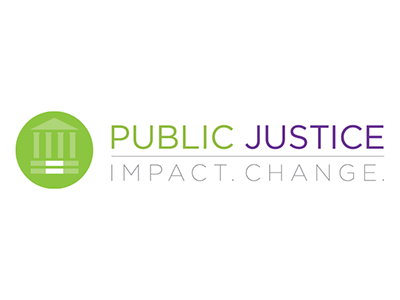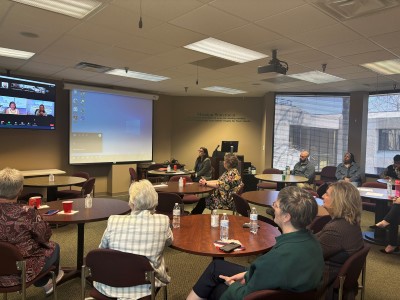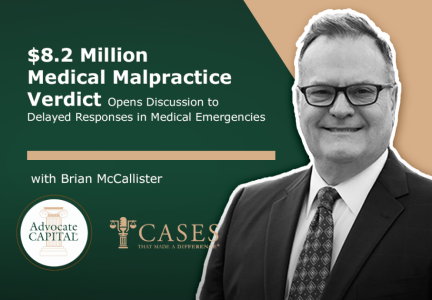Public Justice Advocates for Public Access to Court Records in Disney Lawsuit
Authored By: Candace Whitman
According to Public Justice, current and former women employees at Disney have filed a lawsuit shedding light on pay inequalities within the company.
The lawsuit alleges that for years, women working at Disney were passed over for promotions and raises. Evidence shows that the corporation was aware of the disparity and decided...
Read More
About Public Justice Advocates for Public Access to Court Records in Disney Lawsuit
Law Firm Marketing Tips Webinar Recording With William Ricigliano Available Now
In this webinar, we invite you to listen to Advocate Capital, Vice President of Marketing Rachel Minyard, and William "Bill" Ricigliano, founder and managing partner of RF Injury Law, discuss marketing strategies to enhance plaintiff law firms' visibility and attract valuable clients. Learn tips on elevating your marketing game, boosting your social medi...
Read More
About Law Firm Marketing Tips Webinar Recording With William Ricigliano Available Now
Law Day 2024
Today, May 1st, is Law Day. May 1st was designated as Law Day by Congress in 1961. According to the American Bar Association (ABA), "Law Day is an annual commemoration held on May 1st to celebrate the rule of law and cultivate a deeper understanding of the legal system. "
The theme of this year's Law Day is “Voices of Democracy.” Click here to view some o...
Read More
About Law Day 2024
Celebrating Earth Month
People around the world celebrate Earth Month during the month of April. This month is dedicated to appreciating our planet's beauty and recognizing the urgent need to preserve and protect it for future generations. Two significant dates within April stand out to us: Earth Day and Arbor Day. These occasions remind us of our responsibility to be stewards o...
Read More
About Celebrating Earth Month
Empowering Communities: Pinnacle Financial Partners Opens New Resource Center in Nashville
Authored By: Candace Whitman
Our parent company, Pinnacle Financial Partners, opened a Pinnacle Economic Empowerment Resource (PEER) Center in Nashville. The PEER Center aims to meet the needs of North Nashville residents by offering financial products and education specially tailored to limited-income households.
The new Nashville location is the second...
Read More
About Empowering Communities: Pinnacle Financial Partners Opens New Resource Center in Nashville
Happy Administrative Professionals Day 2024
Today, April 24th, is Administrative Professionals Day! At Advocate Capital, we're fortunate to work with outstanding law firm administrators daily. We'd like to take a moment to honor and express gratitude for their dedication!
Administrative professionals in the legal field are the backbone of law firms, supporting lawyers, paralegals, and clients alike...
Read More
About Happy Administrative Professionals Day 2024
The Right to Hug: Public Justice Helps Fight for In-Person Visits in Jails
Public Justice has filed a pair of lawsuits against two counties in Michigan that have eliminated in-person family visits at their jails to allegedly make money from phone and video calls. The lawsuits, M.M. v. King and S.L. v. Swanson challenge the jails' policies and argue that they are unconstitutional and unnecessary.
Hundreds of jails nationwide hav...
Read More
About The Right to Hug: Public Justice Helps Fight for In-Person Visits in Jails
Celebrating Women of Influence: Advocate Capital Associates Attend Empowering Watch Party
Pinnacle Financial Partners' National Capitol Region (NCR) Diversity, Equity & Inclusion Council hosted their 2nd Annual Women of Influence panel on March 21, 2024, in honor of Women's History Month.
A group of Advocate Capital and Pinnacle Financial Partners associates gathered at our Nashville headquarters to watch the panel virtually together.
The...
Read More
About Celebrating Women of Influence: Advocate Capital Associates Attend Empowering Watch Party
Cases That Made a Difference® - The McCallister Law Firm, P.C. Talks About Delayed Responses in $8.2 Million Medical Malpractice Verdict
In this Cases That Made a Difference® podcast episode, Brian McCallister, attorney, founder, and owner of The McCallister Law Firm, joins Donna Jones, President and Director of Associate and Client Experiences, to talk about the recent $8.2 million victory he achieved for his client in a medical malpractice case. The victim was awarded $8.2 million after...
Read More
About Cases That Made a Difference® - The McCallister Law Firm, P.C. Talks About Delayed Responses in $8.2 Million Medical Malpractice Verdict
Financial Literacy Month and The Importance of Credit Scores
April is Financial Literacy Month, which is a month designated to challenge people to review their finances and educate themselves about different financial topics.
It's the perfect time to shine a spotlight on one of the most crucial aspects of personal finance: credit scores. While they might seem like just a number, credit scores have a significant inf...
Read More
About Financial Literacy Month and The Importance of Credit Scores
